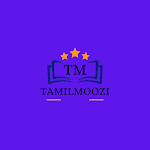The appointment of T. Muthuswami as
thefirst Indian Judge of the Madras High Court in1877 created a furore
in Madras Presidency. Theentire press in Madras criticized the
appointmentof an Indian as a Judge. The press opposed his appointment
and the educated youth realized that the press was entirely owned by
Europeans.The need for a newspaper to express the Indian perspective was
keenly felt. G. Subramaniam,M. Veeraraghavachari and four other friends
together started a newspaper The Hindu in 1878. It soon became the
vehicle of nationalist
propaganda. G. Subramaniam also started a
Tamil nationalist periodical Swadesamitran in 1891 which became a daily
in 1899. The founding of The Hindu and Swadesamitran provided
encouragement to the starting of other
native newspapers such as Indian Patriot, South Indian Mail, Madras Standard, Desabhimani, Vijaya, Suryodayam and India.
moderates hoped for some constitutional reforms. However, they were disappointed with the Minto-Morley reforms as it did not provide
for responsible government. Thus when the national movement was in
its ebb, Annie Besant, an Irish lady and leader of the Theosophical Society, proposed the Home Rule Movement on the model of Irish Home Rule League. She started Home Rule League in 1916 and carried forward the demand for
home rule all over India. G.S. Arundale, B.P. Wadia and C.P. Ramaswamy assisted her in this campaign. They demanded home rule with only a nominal allegiance to British Crown. She started the newspapers New India and Commonweal to carry forward her agenda. She remarked, “Better bullock carts and freedom than a train deluxe with subjection”. Under the Press Act of 1910 Annie Besant was asked to pay hefty amount as security. She wrote two books, How India wrought for Freedom and India: A Nation and a pamphlet on self-government.
important aspects of the movement in Tamil Naduwas the temperance movement or movement against liquor. In November 1921 it was decided to organise civil disobedience. Rajaji, Subramania Sastri and EVR were arrested. The visit of Prince
of Wales on 13 January 1922 was boycotted. In the police repression two were killed and many injured. The Non-Cooperation Movement was withdrawn in 1922 after the Chauri Chaura incident in which 22 policemen were killed.


![9th Social Science 2.5 Mark Questions and Answers PDF Free Download [2025 Updated]](https://blogger.googleusercontent.com/img/b/R29vZ2xl/AVvXsEhYBBX8JkSFqulNnyqD3rQu-sNPoRsDoISv_6k6JUwvR7G_th3aOv2aX6jKqeiNEqHQG2F68GEhXMDYA0_0MONev_G79o1B-UqZMVEDqWPdSs2TjhVK4ONH_pzOSlB8TwQWxldOvwx32wNeqBIrMoiGQP0vdqy7iIL3ywzY3iIc1YimvkyC8lXFjXVkxos/w72-h72-p-k-no-nu/1000490476.webp)

0 கருத்துகள்